Secret passages, intimate bedrooms, low-height ceiling, natural materials, recycled elements, open courtyard and sinuous walls that all define the language of this biophilic farmhouse by Indian architecture practice Blurring Boundaries.Located near Mumbai, India, the 557-square-metre farmhouse, named Maativan, was entirely designed with environmental consciousness by integrating biophilic design, passive design climatology principles and construction technology.Blurring Boundaries has drawn a flexible layout that adapts program elements naturally to the house rather than designing pre-defined spaces. A low-lying farmhouse consists of a free-flowing living room, kitchen, dining room, three courtyards, glass bottle floor, pond, bedrooms, toilets and pantry. What makes this house interesting is its sinuous exterior walls because most of the spaces are shaped according to the movement of the walls.”Maativan signifies a natural building sanctuary made of mud, amidst the forest’s embrace,” said the firm. “The natural farmhouse, nestled on the fringes of Wada’s reserved forest area near Mumbai in India, stands as a testament to dedication to environmental consciousness.
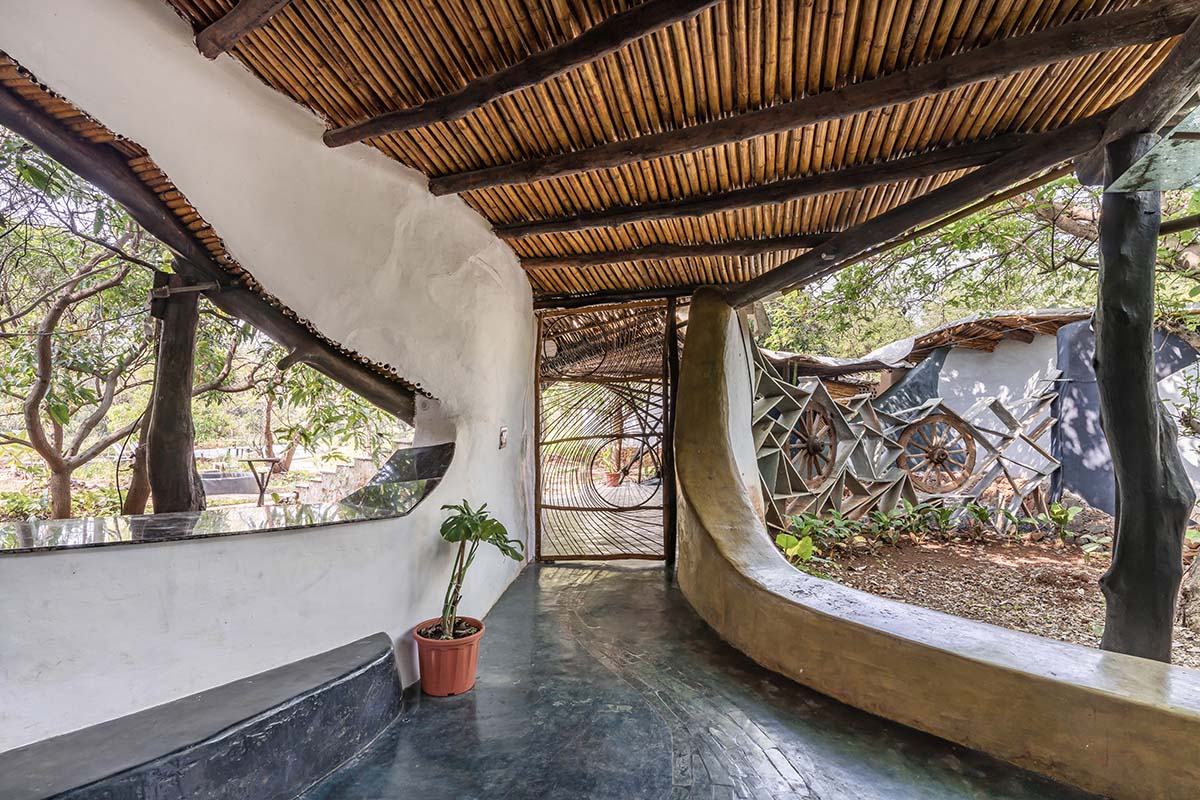
“Exhibiting integration of nature within the building envelope, the studio implemented a thoughtful planning strategy around existing trees, preserving existing natural vegetation. Shaped around biophilic architecture design principles, the overall language of the hosue was influenced by organic forms found in nature and the ephemeral quality of natural light.”The intention was to create an immersive, atmospheric experience that inspires a feeling of being in a forest, in a lush outdoor space under an overgrown natural canopy,” said the studio. “Organic forms merging with surroundings take clues from works and philosophy of architect Nari Gandhi and Javier Senosiain.”Organic and curved walls are the most common elements in the project where it is situated on a permaculture inspired agro tourism getaway at the boundary of the Tansa reserved forests of Wada. Avoiding harming the existing trees, the project is arranged around the existing trees. “The building sits low and blends seamlessly in the forest area, epitomizing a seamless integration with the surrounding environment,” the studio explained. “Upon entering Maativan, the journey commences in an open courtyard bathed in natural light, amidst a dance of stones, guiding passages that seamlessly lead to the interconnected realms of living and dining.”
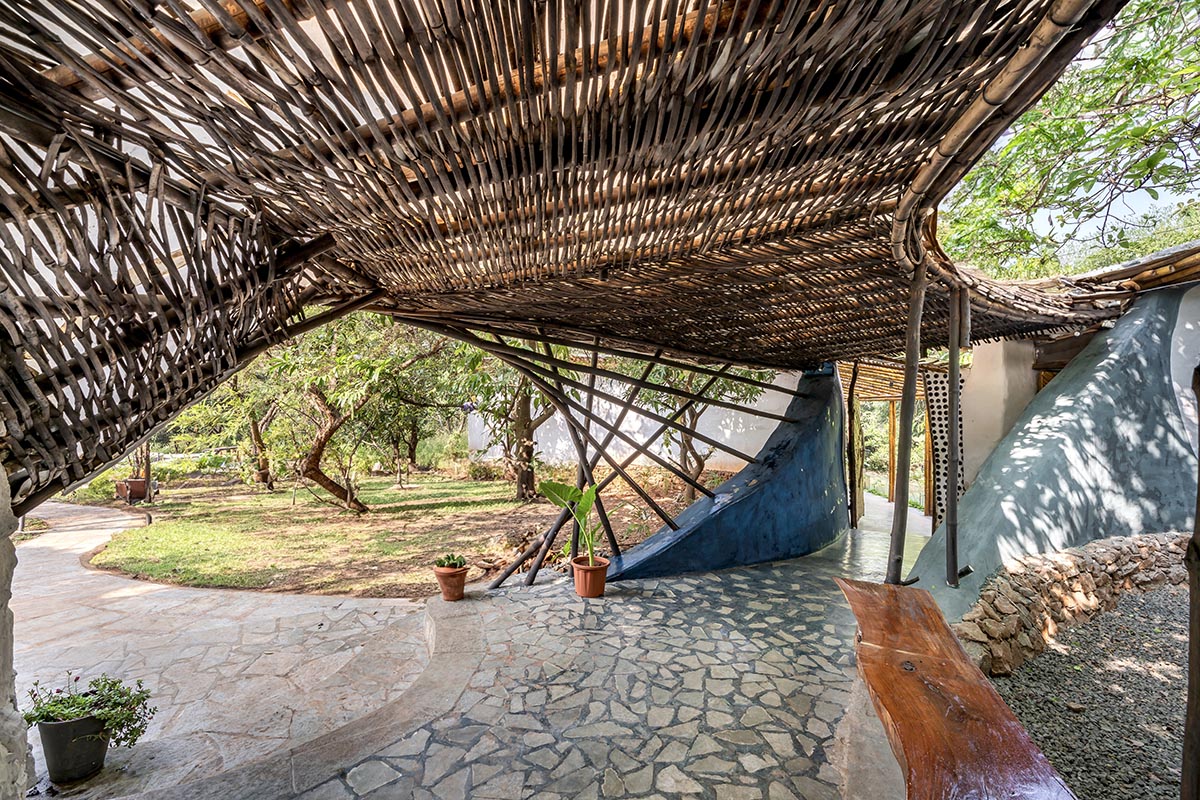
“The use of earthy colors creates a playful vibe, contrasting the greens.””This spatial poetry unfolds within the confines of four bedrooms, courtyards, and communal areas. Each designated space becomes a canvas for the celebration of distinct natural materials, with recycled elements such as wheels and glass bottles imparting an artistic resonance to the environment,” the studio added.Another feature is the interplay of light and shadow, which brings an ethereal quality to the atmosphere. The house consists of four bedrooms and each is oriented for privacy and openness towards the forest side. The passages were added to guide inhabitants to the bedrooms and strategically positioned at the forest’s edge, offering captivating views of the reserved expanse. The washrooms are designed with or overlooking open courts, using overgrown natural landscape as the barrier to the outside world. Enriched with vibrant hues, these spaces resonate with the play of natural light, infusing the architectural narrative with a harmonious and serene vibe.The studio designed the farmhouse with climate-responsive design philosophy that allows natural light and ventilation, creating a comfortable built environment.
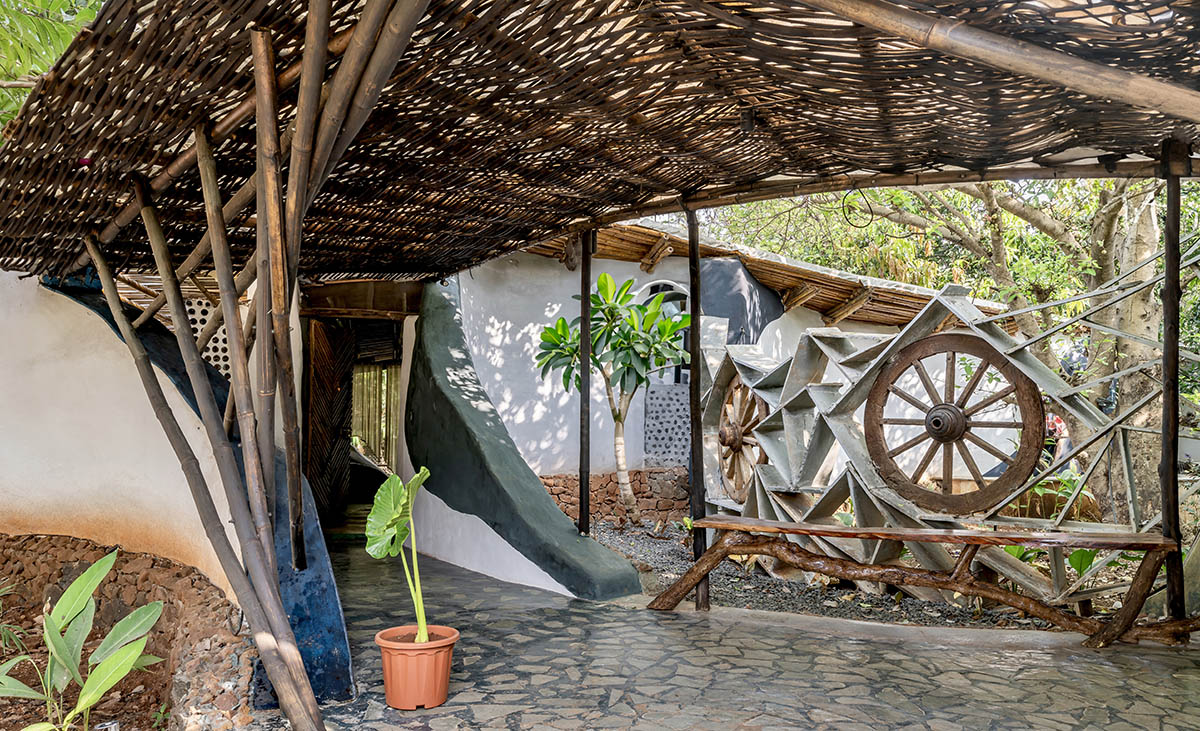
The walls, made of mud, were strategically placed towards the south reduce heat gain, while the roof’s northward slope minimizes exposure to the south, preserving the surrounding ecology.The courtyards around the existing trees within the built spaces and passages play a vital role in creating a natural lit and well-ventilated space. The strategic positioning of openings harnesses prevailing cross ventilation patterns, along with a low-energy mechanical ventilation technology, derived from local polyhouse farm practices. A low energy cooling system has been planned in all living spaces, which pull in cooled air via wet cellulose pads with the help of an exhaust. This cools the ambient temperature within the spaces. To avoid energy-intensive manufacturing processes, the studio used natural materials and traditional construction techniques. “This conscious material selection aligns with environmental principles and offers effective insulation, ensuring comfort irrespective of seasonal variations,” said the studio. The entire structure was built from mud walls, stone walls, bamboo and wood roofs, lime plasters and recycled materials. According to the firm, “this reflects a deep connection to local traditions and a commitment to minimizing environmental impact.
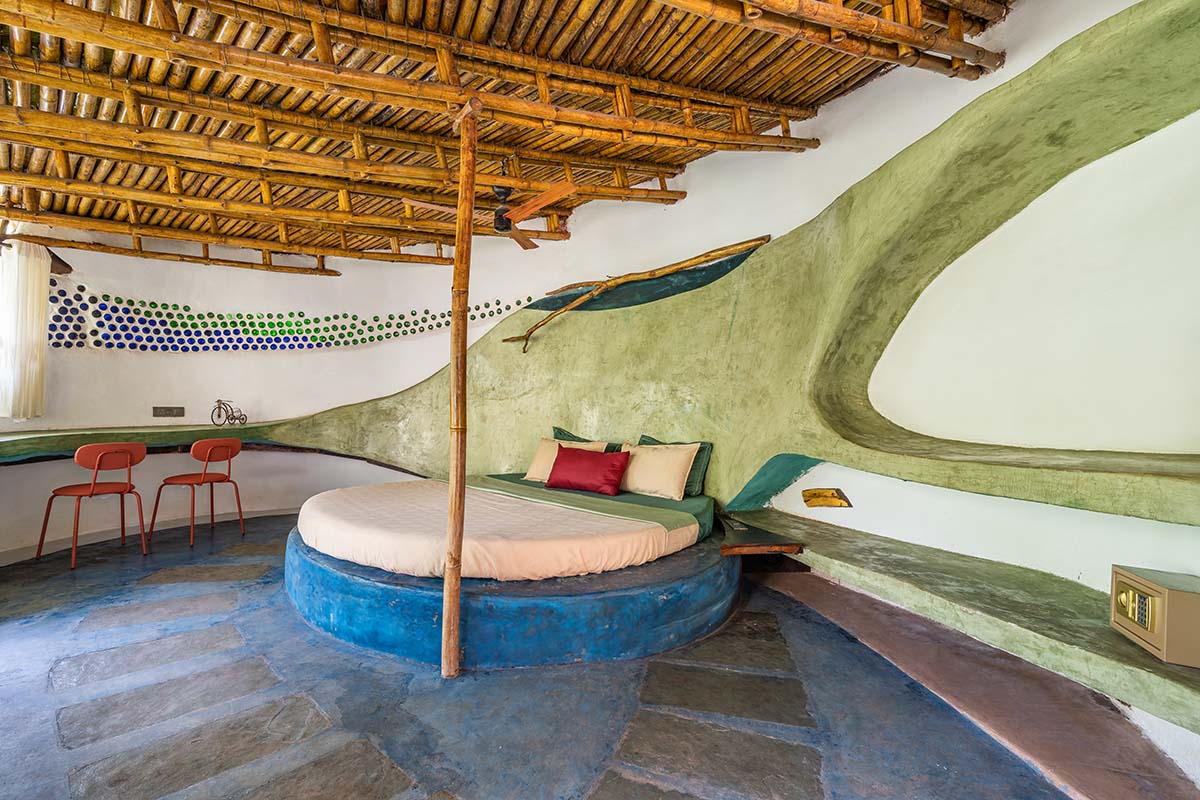
” The architects worked with local labor and artisans to build this structure, by using vernacular ancient Indian construction techniques. This was also important to further enrich the project with a sense of cultural authenticity. “A conscientious approach to recycling permeates the architectural ethos, ingeniously incorporating discarded tires, glass bottles, waste reinforcement, waste glass and terracotta into the framework,” the firm explained. “Using principles of recycling, reusing and upcycling not only minimizes waste but transforms it into integral, artistic, and functional components.”Locally sourced materials and low embodied energy natural building materials include wood, soil, and stone, locally harvested from the site, form the structural building elements. For instance, wood and structural bamboo were used for the main structural members and roof. Cob walls with locally available additives and basalt stone random rubble walls were used for the load bearing walls. “The cob walls are composed of a meticulously composed blend featuring soil, rice husk, hirda (myrobalan seeds) water, neem water, and starch water,” said the firm. Another material is a Kota stone that has been used to create dancing patterns in the partitions between spaces, allowing for visual or physical separations as per the spatial requirements.
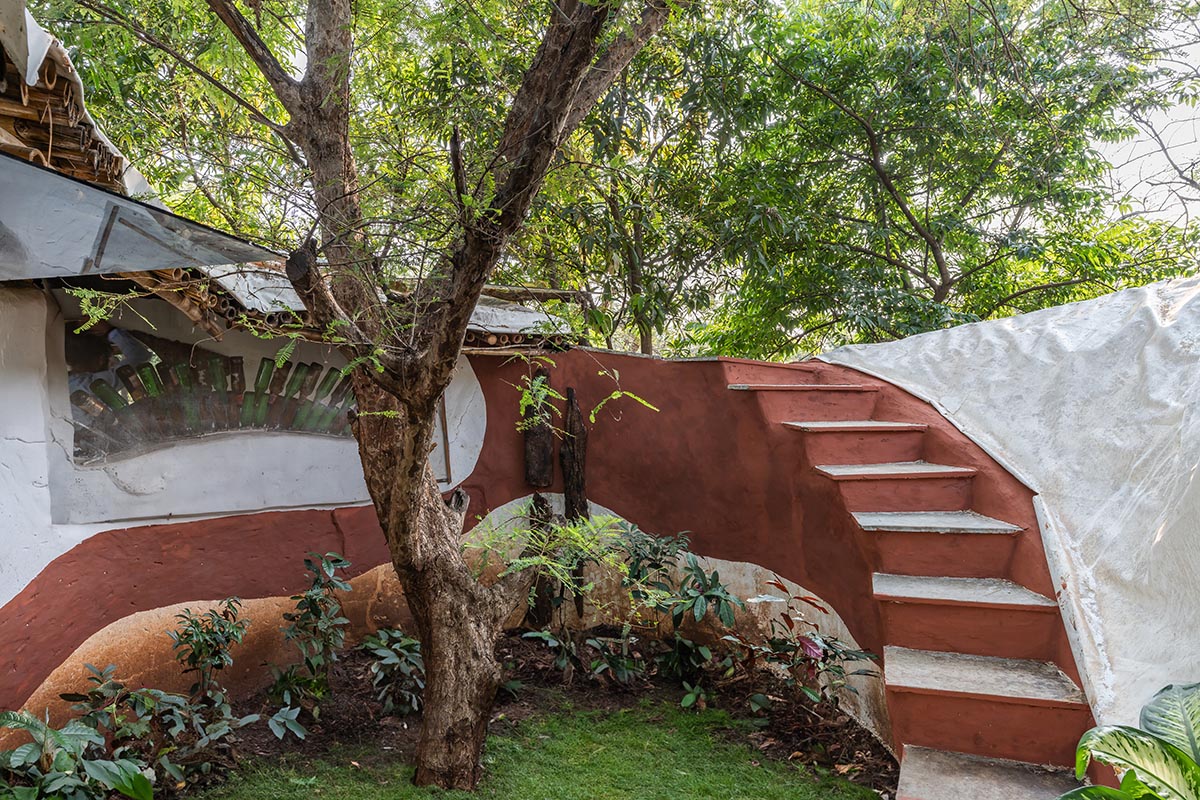
“Lime plaster with lime, fly ash, surkhi (burnt brick powder), sand and linseed oil with the coloured stainers imbibe the space with a bright color palette,” the firm continued. “The flooring is the long used traditional IPS flooring with unique colored pigments. Locally sourced bamboo with mud and lime was used for built in furniture in this uniquely curved structure using the wattle and daub technique.” “The fusion of this material palette not only augments the structural integrity of the walls but also contributes significantly to fostering a healthier indoor environment, aligning with contemporary sustainability principles,” the studio added.According to the architects, this house is a good example of the intelligent application of indigenous materials, avant-garde recycling methodologies and local construction techniques specific to the region.”The structure was integrated with passive energy conservation design techniques along with active water water management, solid waste management and solar technologies,” the firm explained. “The waste basin, bath and kitchen water was diverted into local landscaped areas.” “The solid waste is taken to a central pit layered with 9” soil sandwiched between two layers of broken clay tiles to help break down the solid waste with the help of organic decomposers.
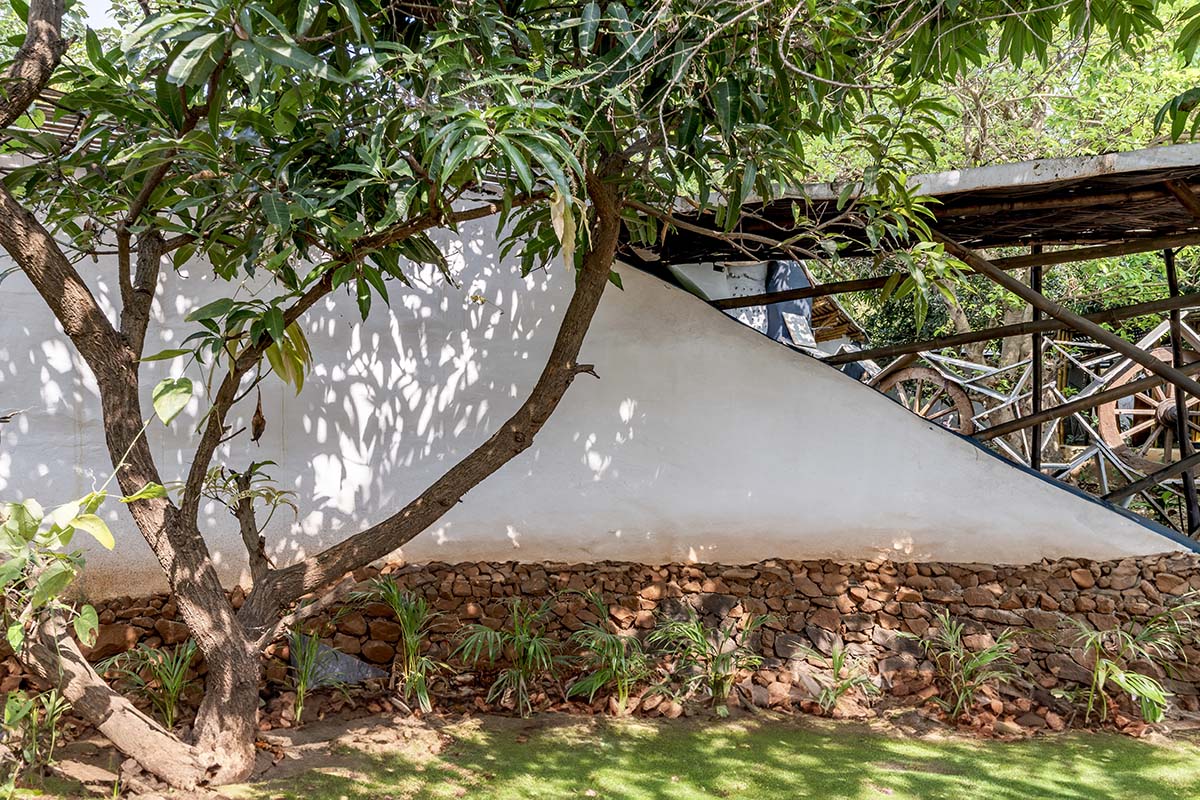
“The kitchen waste is put into composting pits for the local herb and vegetable garden. The structure is mostly powered with solar panels, inverters and battery system since the energy requirement for the structure and equipment is not intensive.The firm stated that “Maativan’s sustainable and contextually responsive biophilic design transcends architectural boundaries, embodying a harmonious blend of innovation, cultural sensitivity, and environmental stewardship.”
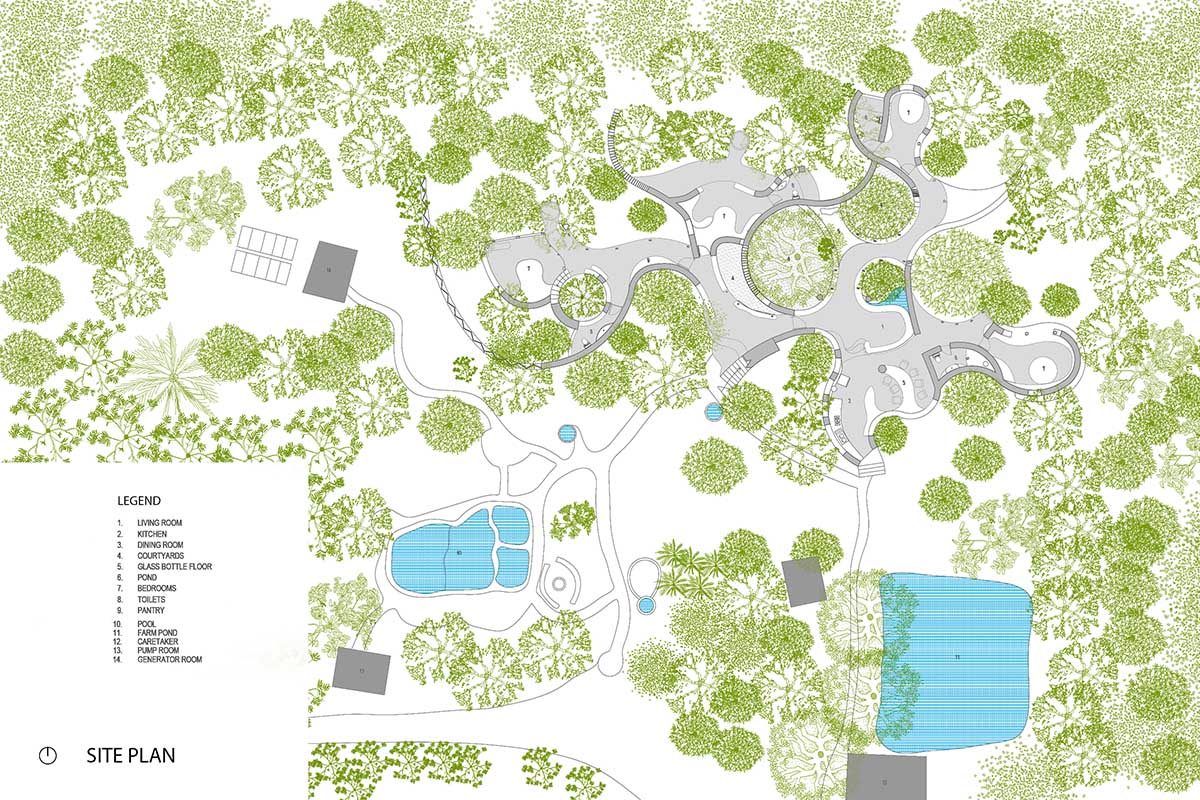
Site plan
Another biophilic project of the studio is Asmalay, a biophilic brick residence is shaped around five mango trees on the site in Maharashtra, India.
Project facts
Project name: Maativan
Architects: Blurring Boundaries
Location: Wada, near Mumbai, Maharashtra, India
Size: 557m2
Completion Year: 2023
Lead Architects: Prashant Dupare, Shriya Parasrampuria
Junior architect: Viral Gala
All images © Inclined Studio.
All drawings © Blurring Boundaries.
> via Blurring Boundaries
bamboo Blurring Boundaries cob walls farmhouse mud Mumbai residence

